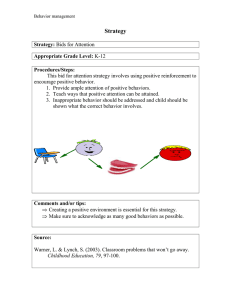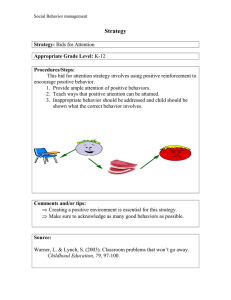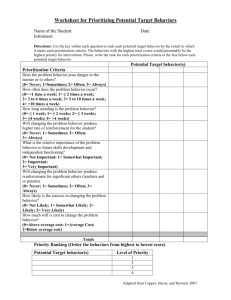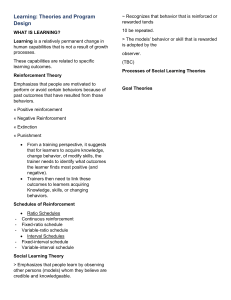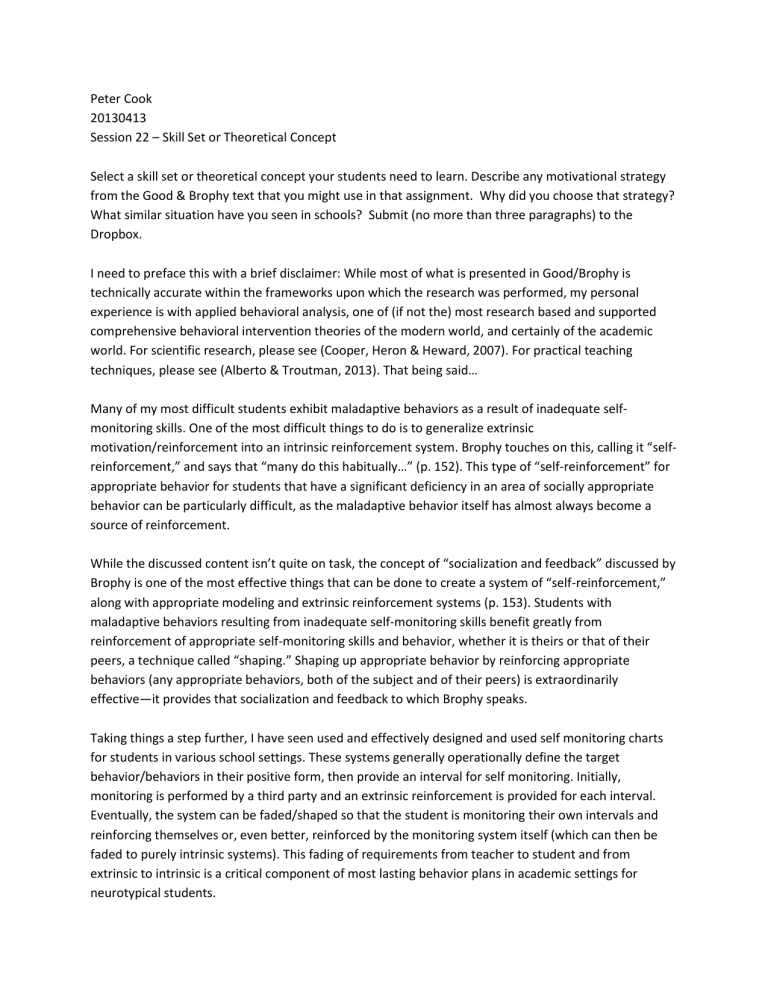
Peter Cook 20130413 Session 22 – Skill Set or Theoretical Concept Select a skill set or theoretical concept your students need to learn. Describe any motivational strategy from the Good & Brophy text that you might use in that assignment. Why did you choose that strategy? What similar situation have you seen in schools? Submit (no more than three paragraphs) to the Dropbox. I need to preface this with a brief disclaimer: While most of what is presented in Good/Brophy is technically accurate within the frameworks upon which the research was performed, my personal experience is with applied behavioral analysis, one of (if not the) most research based and supported comprehensive behavioral intervention theories of the modern world, and certainly of the academic world. For scientific research, please see (Cooper, Heron & Heward, 2007). For practical teaching techniques, please see (Alberto & Troutman, 2013). That being said… Many of my most difficult students exhibit maladaptive behaviors as a result of inadequate selfmonitoring skills. One of the most difficult things to do is to generalize extrinsic motivation/reinforcement into an intrinsic reinforcement system. Brophy touches on this, calling it “selfreinforcement,” and says that “many do this habitually…” (p. 152). This type of “self-reinforcement” for appropriate behavior for students that have a significant deficiency in an area of socially appropriate behavior can be particularly difficult, as the maladaptive behavior itself has almost always become a source of reinforcement. While the discussed content isn’t quite on task, the concept of “socialization and feedback” discussed by Brophy is one of the most effective things that can be done to create a system of “self-reinforcement,” along with appropriate modeling and extrinsic reinforcement systems (p. 153). Students with maladaptive behaviors resulting from inadequate self-monitoring skills benefit greatly from reinforcement of appropriate self-monitoring skills and behavior, whether it is theirs or that of their peers, a technique called “shaping.” Shaping up appropriate behavior by reinforcing appropriate behaviors (any appropriate behaviors, both of the subject and of their peers) is extraordinarily effective—it provides that socialization and feedback to which Brophy speaks. Taking things a step further, I have seen used and effectively designed and used self monitoring charts for students in various school settings. These systems generally operationally define the target behavior/behaviors in their positive form, then provide an interval for self monitoring. Initially, monitoring is performed by a third party and an extrinsic reinforcement is provided for each interval. Eventually, the system can be faded/shaped so that the student is monitoring their own intervals and reinforcing themselves or, even better, reinforced by the monitoring system itself (which can then be faded to purely intrinsic systems). This fading of requirements from teacher to student and from extrinsic to intrinsic is a critical component of most lasting behavior plans in academic settings for neurotypical students. References: Alberto, P. A., & Troutman, A. C. (2013). Applied behavior analysis for teachers. (9th ed.). Upper Saddle River, NJ: Pearson. Cooper, J. O., Heron, T. E., & Heward, W. L. (2007).Applied behavior analysis. (2nd ed.). Saddle River, NJ: Prentice Hall.
